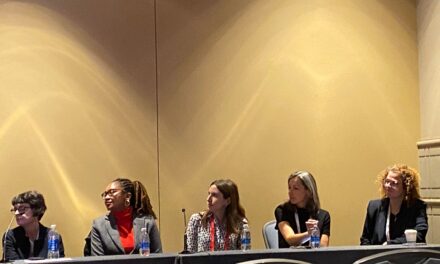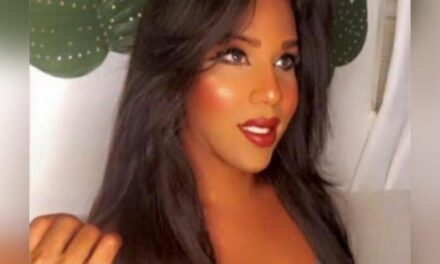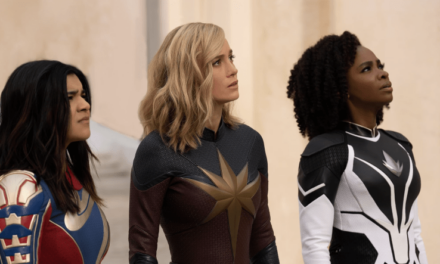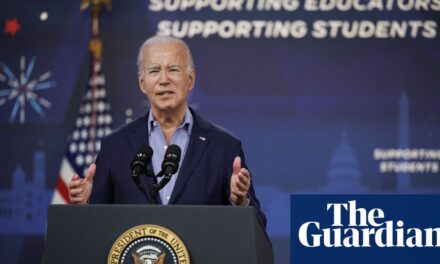WASHINGTON – Bisexual rights advocates point out that a recent Gallup Poll using scientifically proven polling techniques shows that 58.2 percent of people in the U.S. who make up the LGBTQ community identify as bisexual.
And for many years, bi activists say, earlier polling data have shown that people who self-identify as bi have comprised close to 50 percent of the overall LGBTQ population.
Yet in spite of this, a half dozen prominent bisexual rights activists interviewed by the Washington Blade who have been involved in the LGBTQ movement for 20 years or longer say bisexuals for the most part have been neglected and treated in a disparaging way in the early years of the post-Stonewall LGBTQ rights movement.
Things began to improve in the past 15 years or so, but misconceptions and biased views of bisexuals among lesbians and gays as well as in the heterosexual world continue to this day, according to bisexual rights advocates.
These advocates point to the one major stigma they have had to endure for years—the belief that they cannot make up their minds or they are hiding the fact that they are gay men or lesbian women.
“For the record, I state that bisexuality is not a counterfeit behavior or a phase,” said longtime bisexual rights advocate Cliff Arnesen in a statement to the Blade. “It is a true sexual orientation of physical and emotional attraction to both genders,” he said. “I believe some of the apprehension to a person’s bisexual orientation lies within the mindset of people who oppose the concept of bisexual people having ‘heterosexual privilege,’” Arnesen says in his statement.
Arnesen, 74, a resident of Canton, Mass., is a U.S. Army veteran and has also been an advocate for military veterans, both LGBTQ and straight. He says one of the highlights of his many years of activism took place May 3, 1989, when he became the first known openly bisexual veteran in U.S. history to testify before a committee of the U.S. Congress on behalf of LGBTQ and heterosexual veterans.
Among the issues he discussed in his testimony, Arnesen says, were HIV/AIDS, post-traumatic stress disorder, homelessness, gays in the military, and the then Uniformed Code of Military Justice sodomy law impacting LGBTQ people in the military.
He also told the Subcommittee on Oversight and Investigations of the U.S. House Committee on Veterans Affairs in his 1989 testimony about efforts by him and other LGBT veterans to advocate for the upgrade of less-than-honorable discharges of people in the military based on their sexual orientation.
“Bisexual people have always made enormous contributions of benefit to the larger gay community,” Arneson told the Blade. “Yet historically we are marginalized by many in both the gay community and society,” he said.
“To counter that marginalization, we bisexual people must use the ‘key of visibility’ to enlighten and educate the masses as regards to their preconceived misconceptions of bisexuality.”
Arnesen is among at least five other elder U.S. bisexual rights advocates who told the Blade they are seeing positive changes in recent years for bisexuals, including among the national LGBTQ organizations that, according to these activists, ignored the ‘bi’ in the movement for far too long.
Among them are longtime D.C. residents Loraine Hutchins, who co-founded the organizations BiNet USA and the Alliance of Multicultural Bisexuals, and A. Billy S. Jones-Hennin, who in 1978 helped launch the National Coalition of Black Gays, the nation’s first advocacy organization for African-American lesbians and gay men.
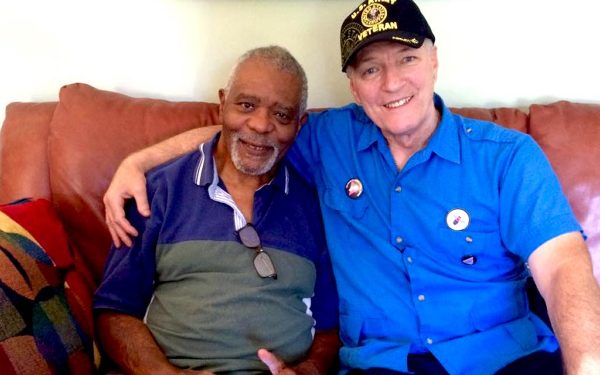
Jones-Hennin is also credited with helping to organize one year later the first national March on Washington for Lesbian and Gay Rights in 1979. During the same weekend of the march, he helped to convene what observers call an historic National Third World (People of Color) LGBTQ Conference at D.C.’s Howard University.
Hutchins, co-editor of the acclaimed 1991 book, “Bi Any Other Name: Bisexual People Speak Out,” holds a doctorate in cultural studies and has taught sexuality and gender and women’s studies at Montgomery College and Towson University in Maryland.
Hutchins is now retired and lives in a retirement community in Montgomery County, Md. She told the Blade she has seen some positive changes in recent years within the overall LGBTQ rights movement and LGBTQ rights organizations toward bisexuals. She notes that the National LGBTQ Task Force’s current executive director, Kierra Johnson, identifies as bisexual.
The Task Force and the Human Rights Campaign, the nation’s largest LGBTQ rights advocacy organization, “have gotten much stronger on understanding bi advocacy or bi education,” Hutchins said.
But despite this, she said, she doesn’t see sufficient advances regarding the needs of bisexual people being fully taken up at the federal policy-making level, including in the administration of President Joe Biden, even though she sees the Biden administration as being better than previous administrations on bisexual issues.
BiPlus Organizing U.S., a national coalition of bisexual rights organizations, reports on its website that bisexual advocates held “three important convenings with the White House” during the Obama administration in 2013, 2015, and 2016. It says a small group of bi activists met with White House officials and officials with the U.S. Department of Health and Human Services in 2022 under the Biden administration during Bisexual Awareness Week.
Fiona Dawson, one of the co-founders of BiPlus Organizing U.S., said the meeting between bi advocates and the Biden administration officials took place at the Department of Health and Human Services offices rather than at the White House.
Dawson, who is from the United Kingdom and now works as a filmmaker based in Austin said the meeting was productive but she and other bi activists would like the Biden White House to hold an official White House reception for the bi community like the reception it holds for the full LGBTQ community.
“We want more bi organizations to contact us,” Dawson said in describing the work of BiPlus Organizing U.S. “I estimate that there are at least 20 bi organizations nationwide,” she said, with most of the groups being locally based. “I see change coming,” she added, saying the younger generation of LGBTQ people, including bisexuals, are becoming more supportive of bi rights.
Many bisexuals now identify as ‘bi-plus’
Jones-Hennin, who attended the first White House meeting with bisexual rights advocates during the Obama administration, said the lack of information about bisexuality in the media and from gay rights groups going back to the 1970s played a role in his own coming out process as a bisexual man.
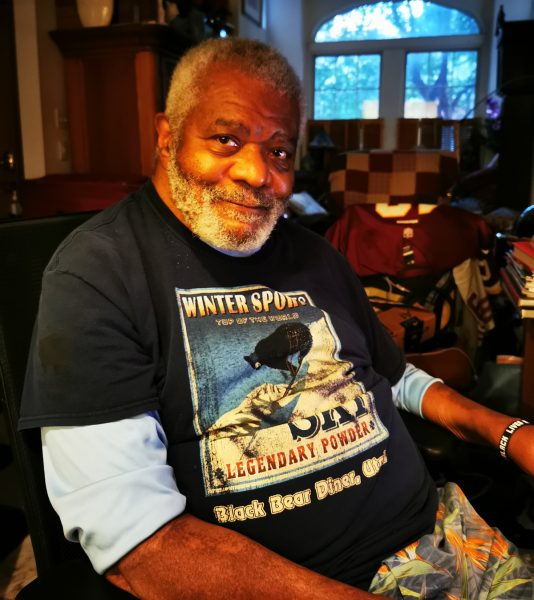
“I started as straight and then as a gay man,” Jones-Hennin recalls. “I at first did not buy into the idea of being bi,” he said. “Bisexuals have been erased and to a certain degree that’s still happening. We need more visibility of bi,” he said.
Jones-Hennin said he and his husband, who spend part of each year in their homes in Mexico and in D.C., now proudly identify as bi plus.
His reference to the term bi-plus or bi+ is part of the definition of bisexuality that bi rights advocates have been using to be inclusive of those who identify as pansexual as well as those who are both transgender and bisexual.
“Bi+ people may use many terms to describe their own sexual identities, including queer, pansexual, omnisexual, polysexual, and heteroflexible,” according to T.J. Jourian, Ph.D., and author of a January 2022 article on bisexuality for the publication Best Colleges.
In his article, Jourian quotes Massachusetts-based longtime bisexual rights advocate and author Robyn Ochs as providing her own interpretation of being bi.
“I call myself bisexual because I acknowledge that I have in myself the potential to be attracted – romantically and/or sexually – to people of more than one sex and/or gender, not necessarily at the same time, not necessarily in the same way, and not necessarily to the same degree,” Ochs says in a statement.
Bisexuals more likely to have mental health problems: study
Hutchins, meanwhile, points to a report released on June 13 by the U.S. Department of Health and Human Services’ Substance Abuse and Mental Health Services Administration (SAMHSA) that shows that adults who identify as lesbian, gay, and bisexual are more likely to have mental health problems than their straight counterparts. But the study also shows that people who identify as bisexual have a higher rate of mental health problems, including suicidal ideation, than gays and lesbians.
LaNail Plummer, a mental health therapist and licensed professional counselor who serves as CEO and clinical director of the D.C.-based Onyx Therapy Group, said she has seen from her therapy and counseling practice that the mental health issues faced by bisexual people are often the result of discrimination and negative treatment they receive from both the heterosexual community and from gays and lesbians.
Plummer, who herself identifies as bisexual, told the Blade in a phone interview that bisexuals often go through a coming out process that’s more complicated and involves less peer support than the coming out process for gay men and lesbians.
“There’s a lot of people who are bisexual in a world that seems to be centered around polarity,” Plummer said. “It is complicated for bisexual folks because bisexual folks can and will likely date people of the opposite sex at different times,” she said, requiring to some degree that they must “come out” in a same-sex relationship and later in an opposite-sex relationship.
Bisexual people face additional “stressors,” Plummer said, when they are in a relationship with a partner of the same sex because that partner sometimes manifests fear that their bi partner will leave them for someone of the opposite sex.
“I have a person I know who identifies as bisexual and she has a wife,” Plummer told the Blade. “And every time the person that I know goes out, the wife, who identifies as lesbian, gives her a really hard time, by asking are you going to be with a man today? What happens if a man comes up and talks to you? How are you going to respond to them?”
That type of dynamic, according to Plummer, often prompts bisexual people to go back into the closet and withhold their identity as bi to someone they are dating or in a relationship with who may be of the same sex or the opposite sex.
Plummer and bisexual rights advocates say this type of stress placed on bi people is usually based on misconceptions and bias against bisexuality that bi advocates say they hope will continue to decline with improved education and understanding of bisexuals.
Elder activists hopeful that bias is declining
Ochs told the Blade in an interview that she has been an activist in support of LGBTQ and bisexual equality for more than 40 years, with a focus on issues of concern to bisexuals.
“And I would say the first 30 of those years I felt we were beating our heads against a stone wall,” she said in describing efforts to advance bisexual rights. “It was so frustrating. I saw little progress. I felt like we were having the same conversations over and over and over,” she said.
“We continued to be ignored in all sorts of media, both mainstream media and LGBTQ media,” she recounted. “It would have been inconceivable up to about a decade ago for an out bisexual person to have ever been appointed as head of any national LGBTQ organization,” she said.
“So, that’s the background. The good part is that’s no longer true,” Ochs said. “There is much more cultural representation now with musicians, politicians and public figures coming out as bisexual and pansexual.”
She pointed to the two prominent national LGBTQ organizations that currently have top leaders who identify as bi+. The two are Kiera Johnson, executive director of the National LGBTQ Task Force, and Erin Uritus, CEO of the national LGBTQ group Out & Equal.
Another longtime bi advocate currently based in San Francisco, Lani Ka’ahumanu, is widely recognized as a leader in national social justice movements, including Native American, feminist, anti-war, and LGBTQ and bisexual rights movements. She is also an acclaimed author and poet whose writings appear in 20 books, including the book she co-edited with Loraine Hutchins, “Bi Any Other Name: Bisexual People Speak Out.”
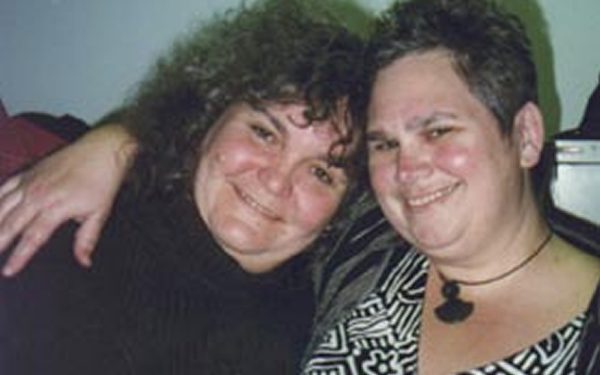
Her online biography says Ka’ahumanu, like other bi activists, evolved from a suburban housewife in a heterosexual marriage with children in the 1960s and an amicable divorce with her husband before she came out as a lesbian.
“I was a lesbian for four years in the ‘70s,” she told the Blade in a phone interview. “And then I fell in love with a bisexual man and came out in 1980 as bi,” she said, adding that she continued, sometimes despite fellow activists who were skeptical about bisexuality, in her involvement in the feminist and LGBTQ rights movements.
She became the first known out bisexual to serve on the board of directors of a national LGBTQ rights organization in 2000, when she was appointed to the board of the National LGBTQ Task Force, where she served until 2007.
Ka’ahumanu agrees with other bi rights advocates that things have improved in recent years for the bisexual community in the political and social landscape. But she said she was startled earlier this year when expressions of bias toward bisexuals surfaced, of all places, at the National LGBTQ Task Force’s annual Creating Change Conference held in San Francisco last February.
In her role as an elder and mentor to young bi activists, she said, she attended one of the conference’s bisexual workshops. “And hearing what some people said, it was the same stories from the ‘80s and 90s,” she recounted. “You know, you need to make up your mind. People were still being trashed for being bisexual within the lesbian and gay community,” said Ka’ahumanu.
“And that part kind of threw me,” she recounted. “I said, are we still in this place of being invisible?” she asked. “A lot of people still can’t step outside of that either or thing.”
Ka’ahumanu made it clear that most of the other sessions of the Creating Change Conference, which marked the beginning of the Task Force’s 50th anniversary, appeared supportive of the LGBTQ organization’s progressive and supportive views and policies on LGBTQ issues.
Shoshana Goldberg, Public Education and Research Director for the Human Rights Campaign, the nation’s largest LGBTQ political advocacy organization, said that like the LGBTQ community as a whole, recent developments have been “mixed” for bisexuals in the U.S.
“Bisexuals, particularly bisexual women of color, consistently earn less than the average American worker, and even less than their LGBTQ+ peers,” Goldberg said in a statement. “Many of the health disparities seen between LGBTQ+ and cis/het folks are magnified for bisexual people, and bisexuals continue to face biphobia from both straight and queer communities, and bi-erasure from all sectors of daily life,” Goldberg stated.
HRC official Rebecca Hershey, who works on diversity and inclusion issues, said HRC has been addressing issues of concern to the bisexual community through, among other things, its LGBTQ Coming Out Guides, which offer information to “dispel myths and address stereotypes about bisexuality.”
HRC also supports the annual Bisexual Health Awareness Month and in 2019 released its Bi+ youth report, which analyzed a survey HRC conducted of close to 9,000 teens to “help shed light” on the experiences of bi+ youth nationwide.
Bi rights advocates say the national LGBTQ organization GLAAD, which focuses on improving fairness in media and entertainment industry portrayals of LGBTQ people, has also acted as a strong advocate for bisexuals. In the 11th edition of its Media Reference Guide, GLAAD includes a detailed write-up on how the news and entertainment media should report on or portray bisexual people.
“By being more cognizant of the realities facing bisexual people and the community’s many diversities, and by fairly and accurately reporting on people who are bisexual, the media can help eliminate some of the misconceptions and damaging stereotypes bisexual people face on a daily basis,” GLAAD’s Media Reference Guide states.
Arnesen, the elder bisexual rights advocate who his bi colleagues refer to as an icon in the bi movement, sums up his sentiment as a bisexual advocate in his statement to the Blade.
“As a Bisexual human being, I am mindful that I stand upon the shoulders of the innumerable and courageous GLBT+ pioneers and advocates for ‘equality’ who came before me,” he wrote. “Fate just happened to put me in the right place, at the right time to advocate for ‘equality’ on behalf of my bisexual brothers and sisters; and our country’s GLBT and Heterosexual veterans of the U.S. Armed Forces,” he states.
“Today, the love of my life of 33 years is a heterosexual woman named Claudia, whom I love with all my heart and soul,” he says. “As a bisexual person I have been doubly blessed to know the love of both men and women during my life’s journey, and I cherish those memories within my heart.”
Additional information about bisexual rights issues and the state of the bi movement can be accessed through BiPlus Organizing US and its member organizations:
• BiPlus Organizing US
• Bisexual Resource Center, biresource.org
• Bisexual Organizing Project
• Los Angeles Bi+ Task Force, labitaskforce.org
• Bi Women Quarterly, BiWomenQuarterly.com


